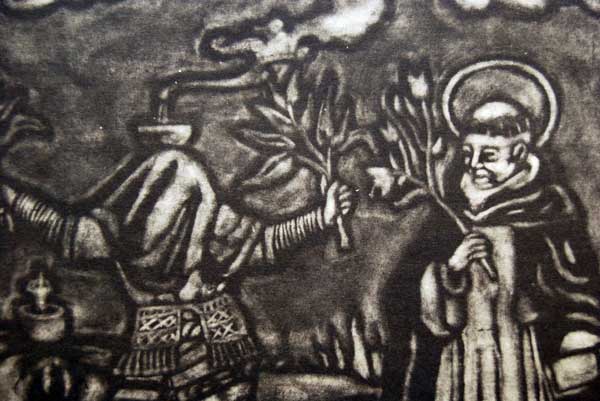The study of Philippine Folklore and Mythology is an arduous task. However, it is something that I have dedicated the last 10 years of my life to and feel a growing passion towards with each passing day. One of the more difficult aspects is addressing old, outdated theories that have integrated themselves into popular opinion through broad misunderstandings. In this article I am going to address the theory that the aswang was created from the Franciscan, Jesuit, and Augustinian missionaries persecution of the Babaylan.
Before I begin, I need to state that it is without question the Spanish wanted to eradicate indigenous and tribal religions in the Philippines. I also believe they had a vested interest in stripping power from the babaylan and catolonan. They did this sometimes using brutal and humiliating tactics [Fray Diego del Villar,1595, Manila, ]. What I don’t subscribe to, is that they used the aswang to achieve this.
The babaylan was a prominent figure in pre-colonial Philippine society, sometimes described as a priestess or shaman. Babaylans acted as healers, prophets and mediums, curing illnesses and exorcising evil spirits from objects or people.
An Aswang (or Asuwang) is a shapeshifting monster in Filipino folklore usually possessing a combination of the traits of either a vampire, a viscera sucker, a ghoul, a witch, or different species of werebeast, or even all of them together.
Babaylan to Aswang: The Theory
In its most simplistic form, the theory suggests that traits of the aswang documented by folklorists and anthropologists are actually inversions created by the Spanish to subvert the powers and influence of the babaylan (or other shamans from the Philippines). The aswang is known for its propensity towards human fetuses, internal organs, and bodily discharges. The mirror of this is that the babaylan is known as a mid-wife and healer. Other inversions are the offensive odor of the aswang versus the possibly pleasant herbal odors of the babaylan. It is theorized that the Spanish attached, and invented, aswang folklore to disenfranchise the most powerful women of the Philippines. On the surface, and to most Filipinos, this sounds like a solid theory. It successfully disowns what could be perceived as an “ignorant superstition”, while preserving cultural tradition and modern feminist ideals – which are all positive things.
Misunderstanding the Aswang Origin
The ‘Babaylan to Aswang’ theory gained most of its traction with the 1991 paper written by California based folklorist, Hermenia Meñez, titled, “The Viscera-Sucker and the Politics of Gender”. Meñez is specifically writing about the female, viscera sucking, self segmenting, witch classification of aswang – yet her theory has been applied across the entire ambiguous spectrum of the aswang by some readers, or summerizations of the paper. At no point does she insinuate that the aswang did not exist before the Spanish arrived. Perhaps the Tagalog habit of interchanging Manananggal (self-segmenting viscera sucker) with Aswang is partially to blame. The Mananaggal is only one of the many malevolent creatures and spirits under the Aswang category. This ‘demonization’ theory has also been applied to other mythical beings in Philippine myth and folklore. In effect, this creates gaping holes in pre-colonial pantheons and belief structures and promotes a very romanticized version of ancient Philippine Mythology. These theories essentially provide an outlet for the modern contempt towards the perceived intervention of progressivism by the church.
Meñez’s paper was not presented to track the origin of the aswang, so it does not detail that the areas first colonized by the Spanish (Visayas, Manila, and Bicol), also happen to be the areas that were influenced the most by Hinduism and the concept of their demons. Rakshasas were most often depicted in Hinduism as ugly, fierce-looking, enormous creatures with two fangs protruding from the top of their mouth. They had sharp, claw-like fingernails and are mean, insatiable cannibals that could smell the scent of human flesh.
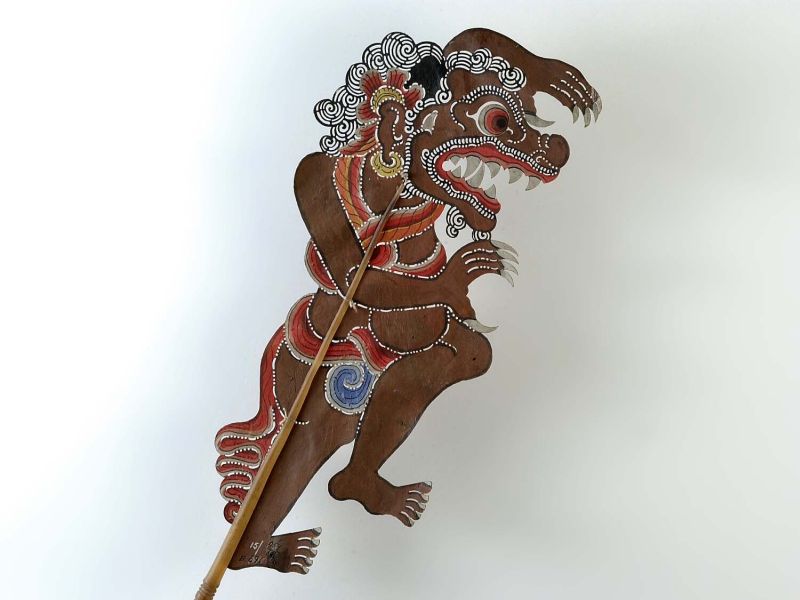
Further, the “preta” classification of Rakshasa are described as a beautiful female who would appear to men and lure them to their death. They would also attack babies and pregnant women to drink their blood. Some believed that these vampires caused stomach sicknesses in people who had trespassed into their territory and that these fanged creatures lived in trees and could spy on those passing beneath.
This concept was brought to the Philippines through migration and trade between 300-900CE. I don’t fault Meñez for excluding this, as the extent the Indianized influence had on the Philippines was not completely known – or more importantly, accepted – until after her paper was published.
I am not alone in this comparison, the connection was seen as early as 1913 by Laura Watson Benedict in her paper, “Bagobo Myths“ published in The Journal of American Folklore. She writes, “The anthropomorphic and amorphic evil personalities, whose number is legion. The traditional concept of Buso among the Bagobo has essentially the same content as that of Asuang with Visayan peoples. Both Buso and Asuang suggest the Rakshasa of Indian myth.”
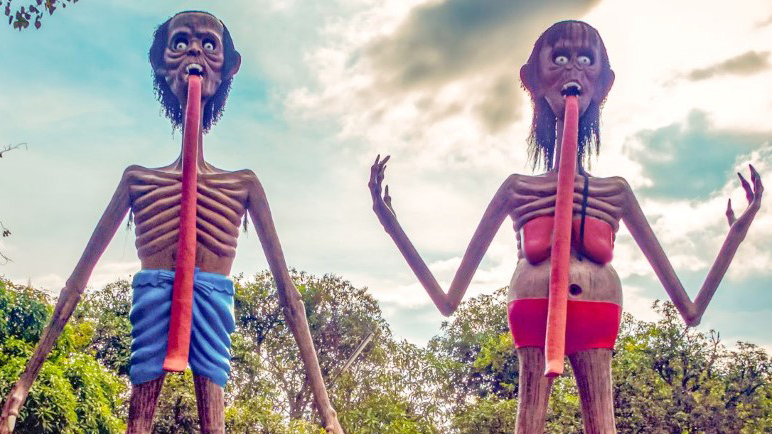
The Gender of the Aswang
Meñez states that the female viscera sucker is “rarely known in upland Northern Luzon and Mindanao. More importantly, among these animists and their counterparts in the rest of island Southeast Asia, the viscera sucker is not gendered and usually appears as a bird or a dog.”
In regards to the first statement, I would like to counter that the viscera sucker does not exist at all in Northern Luzon or any area where there was no influence from Hinduism. In Mindanao, the asuang (and similar beings) exist among many of the animist tribes, which had virtually no Catholic influence, yet were influenced by Hinduism. These areas in Mindanao were also comprised of very small autonomous communities, so animist beliefs and the subsequent Indian influence developed only as far as the environmental and societal requirements needed them to. In the more populated regions like the Visayas, polytheistic pantheons were created to incorporate the deities and mythical beings of many communities.
The vastness and complexity of a polytheistic religion can usually be attributed to the size of the population base it governs. The Philippines had approximately 400,000 people when the Spanish arrived. In the Visayas, some of the interconnected communities may have been well into the thousands. This is why their mythical beings and spirits are in greater number, and more complex, than some of their fellow mountain dwelling communities. For example, in Greek Mythology we are aware of the Titans, Olympians, and several mythical creatures and heroes. At its peak, Greek Mythology governed close to 13 million people and actually includes thousands of deities, creatures and heroes – most of which many people have never heard of. My point being, in the Visayas, the complex belief structure which included larger environments, communities, and personalities would invariably have specific beings associated with all gender variations. In a smaller autonomous community, these malevolent spirits may remain non-gender specific.
As to Meñez’s second statement that these beings were non-gender specific in other areas of SE Asia. This does not seem to be the case.
LEYAK (Indonesia): In the folklore of Bali, the Leyak is a mythological figure in the form of flying head with entrails (heart, lung, liver, etc.) still attached. Leyak is said to fly trying to find a pregnant woman in order to suck her baby’s blood or a newborn child. There are three legendary Leyak, two females and one male.
KRASUE (Thailand): It manifests itself as a woman, usually young and beautiful, with her internal organs hanging down from the neck, trailing below the head. The Krasue is under a curse that makes it ever hungry and always active in the night when it goes out hunting to satisfy its gluttony, seeking blood to drink or raw flesh to devour. It may attack cattle or chicken in the darkness, drinking their blood and eating their internal organs. If blood is not available the Krasue may eat feces or carrion. The Krasue also preys on pregnant women in their homes just before or after the childbirth. It uses an elongated proboscis-like tongue to reach the fetus or its placenta within the womb. This habit, among other unmentionable things that this spirit does, is believed to be the cause of many diseases affecting women mainly in rural areas during their pregnancy.
PENANGGAL (Malaysia): In Malaysian folklore, a Penanggal may be either a beautiful old or young woman who obtained her beauty through the active use of black magic, supernatural, mystical, or paranormal means which are most commonly described in local folklores to be dark or demonic in nature. The Penanggalan is usually a female midwife who has made a pact with the devil to gain supernatural powers. It is said that the midwife has broken a stipulation in the pact not to eat meat for 40 days; having broken the pact she has been forever cursed to become a bloodsucking vampire/demon.
Among ethnic groups in Indonesia, the ghost is called Kuyang by the Dayak people of Kalimantan, or Palasik (or Pelesit) by the Minangkabau people. In Laos it is the Kasu or Phi-Kasu and in Cambodia it is the Ap.
Through comparative studies, it would seem the female viscera sucker exists in the Philippines not because of Catholicism, it exists despite it. It exists in Malaysia and Indonesia despite Islam. It exists in Cambodia, Thailand and Laos despite various forms of Buddhism. The common denominator is an animist base with a Hindu influence.
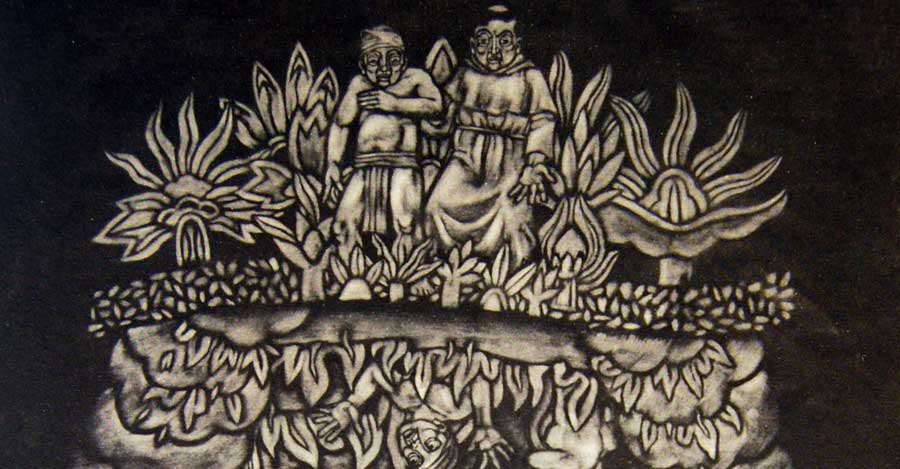
But what about the witch?
For me, this is the most troubling aspect of the aswang folklore. Not because it is difficult to trace, but more because of the continued societal effects. To this day, it seems a common occurrence that a woman in the Philippines is beaten or murdered for being a suspected aswang. The Spanish most certainly categorized the work of the babaylan as being witchcraft or in league with the devil. In 1589 Father Juan de Plasencia even went as far as to document the catolonan (Tagalog shaman) in his list of “distinctions made among the priests of the devil”. Again, I won’t dispute the Spanish had an agenda to remove these women from power, but black magic and the inherent struggle between good and evil (inversions) did not arrive with them.
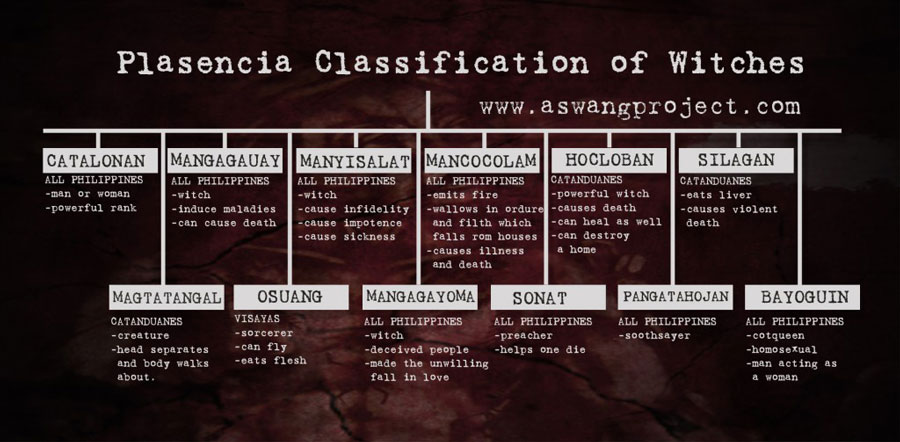
In the Southern regions like Mindanao, where Hindu influences were integrated (yet Catholicism had failed), curses and dark magic exist. This is a common theme throughout the Hindu influenced regions of Southeast Asia.
In Hinduism, Yajurveda (the Veda of prose mantras) talks very clearly about the spirit world and black magic and even educates people on rituals and mantra’s to do black or white magic to hurt or heal people.
A dukun is an Indonesian-Malay term for shaman. In Malaysia, they are often referred to as bomoh, but dukun or pawing/pawang also used in various languages. Their societal role is that of a traditional healer, spirit medium, custom and tradition experts and on occasion sorcerers and masters of black magic. When a dukun uses black magic to harm other people, it is known as santet.
Black magic in Thailand involves spirits, ghosts, souls, talismans and also extends to the use and practice of voodoo known as barang. Using barang, a practicioner can make various dangerous object appear inside the stomach of the intended victim. Not coincidentally, in the Eastern Visayas, a Barangan is a witch who uses insects and spirits, and any material to enter the body of anyone they hate. These things are said to exit the body in the most gruesome of fashion. In Bicol, Mambabarangs are ordinary human beings with black magic who torture and later kill their victims by infesting their bodies with insects. In other areas of the Philippines, Kulam is a form of dark magic. One who practices kulam is known as a Mangkukulam. The aswang classification is often associated with the above mentioned “witches”.
The enduring social issues are also not something that is exclusive to the Philippines and its majority Catholic population. In certain areas of Indonesia, the Dukun santet are feared, and feelings of revenge often occur among the people. In his book “Naming The Witch”, James T. Siegel explores the recent series of witchcraft accusations and killings in East Java – as many as 150 in a single year. ” The author sees witchcraft as an effect of culture, when the latter is incapable of dealing with accident, death, and the fear of the disintegration of social and political relations. He shows how and why modernization and witchcraft can often be companions, as people strive to name what has hitherto been unnameable.”
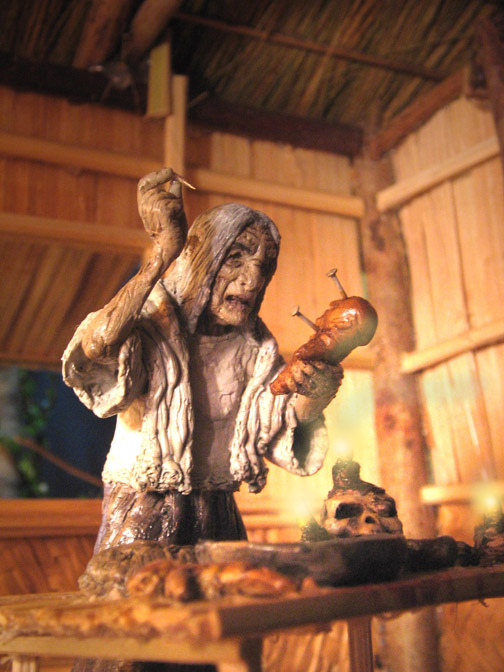
The Damage Done
To Herminia Meñez’s credit, she effectively explains how some of the Mananaggal’s characteristics and methods of expulsion could be attributed to the people’s Catholic mindset. I also have to credit her on some of the other incredibly informative essays she wrote for her collection “Explorations in Philippine Folklore” (Ateneo de Manila University Press 1991). While I have addressed some issues I believe needed context or clarity, I don’t want to diminish what incredible work she has done. I have the luxury of searching Google for the ethnographic papers I wish to read, and then accessing every library in the world to receive a digital copy. I am looking at her paper with an additional 25 years of scientific and ethnographic studies on language groups, migrations and DNA.
That said, I felt the need to address the Spanish being blamed for the invention of the aswang. This thinking not only devalues and discredits a very important cultural phenomenon, it sends people down an inconsistent and demoralizing path while exploring Philippine Mythology. The demonization theory discourages study and understanding of the evolved indigenous beliefs that continue to persevere in both rural and urban communities. The aswang is a unifying aspect of Philippine Culture, but instead has been used to divide the ‘educated’ from the ‘ignorant’. This is one of the many great cultural tragedies of Philippine modernism.
In closing, the aswang, and like beings, are a part of the Hindu influenced areas of Southeast Asia. The Spanish went to great lengths, causing immense cultural damage, to take away the power of the babaylan. Evidence does not support them tagging these shamans as one of the superstitions they so despised. I may have to respectfully disagree that the viscera-sucker (or aswang) “represent a process of disenfranchising the most powerful Filipino women and a politics of gender that has deep roots in the Spanish conquest of the Philippines”. It does, however, represent the deep roots Hindu influence had on Southeast Asia and the Philippine area.
Additional Artwork from The Soul Book and The Aswang Inquiry (GCF Books)
ALSO READ: APOLAKI’S LAMENT: Who killed the ancient Filipino gods?
Jordan Clark is a Canadian born descendant of Scottish immigrants living on the homelands of the Lekwungen speaking peoples. His interest in Philippine myth and folklore began in 2004. Finding it difficult to track down resources on the topic, he founded The Aswang Project in 2006. Shortly after, he embarked on a 5 year journey, along with producing partner Cheryl Anne del Rosario, to make the 2011 feature length documentary THE ASWANG PHENOMENON – an exploration of the aswang myth and its effects on Philippine society. In 2015 he directed “The Creatures of Philippine Mythology” web-series, which features 3 folkloric beings from the Philippines – the TIKBALANG, KAPRE and BAKUNAWA. Episodes are available to watch on YouTube. Jordan recently oversaw the editing for the English language release of Ferdinand Blumentritt’s DICCIONARIO MITOLÓGICO DE FILIPINAS (Dictionary of Philippine Mythology) and is working on two more releases with fellow creators scheduled for release later this year. When his nose isn’t in a book, he spends time with his amazing Filipina wife of 20 years and their smart and wonderful teenaged daughter.

